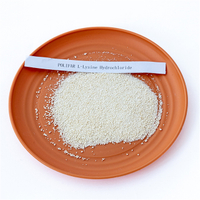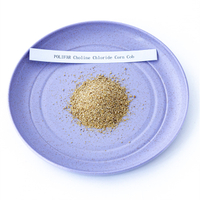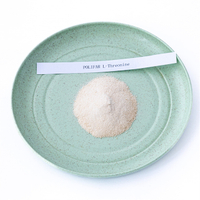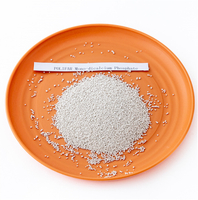Views: 0 Author: Site Editor Publish Time: 2022-10-14 Origin: Site








It has become a consensus that methionine is the first limiting amino acid for poultry. As an essential amino acid, animals cannot synthesize or synthesize in small amounts, and must be provided by exogenous diets to maintain animal production. The content of methionine in ordinary corn-soybean meal type feed is limited, and additional methionine is needed to meet the animal's demand. At present, the price of methionine on the market is quite high. Choline and betaine have been widely used in feed production as a partial substitute for methionine. This article reviews the metabolism and functional relationship of methionine, choline and betaine in poultry.

1 . Physiological effects of methionine, choline and betaine
Methionine is a sulfur-containing amino acid, its chemical name is 2-amino-4-methylthiobutyric acid, and its molecular formula is C5H11NO2S. Choline is the hydroxide of (β-hydroxyethyl) trimethylamine with the molecular formula C5H15NO2S. Betaine, also known as trimethylglycine, has a molecular formula of C5H11NO2. The three products are similar in structure.
1.1 The physiological role of methionine
Most animals, especially birds, cannot synthesize methionine in their bodies, or synthesize very little. Most of methionine is directly involved in protein synthesis in animals, and when the amount of cystine in the diet is insufficient to meet the needs of animals for protein synthesis, methionine will be converted into cysteine required for protein synthesis.
Another important role of methionine is to provide methyl groups to various methylation reactions in animals. The methyl group is necessary for the synthesis of several substances with important physiological functions. For example, the process of synthesizing uric acid in birds requires amino acids such as methionine to provide methyl groups. Methionine participates in a series of methylation reactions in animal bodies by providing methyl groups, and these methylation reactions synthesize some important metabolites, including choline, carnitine, creatine, phospholipids, epinephrine, RNA and DNA.

1.2 The physiological role of choline
Choline in animals mainly exists in the form of lecithin, lysolecithin, phosphorylcholine, neurocholine, choline acetate, etc., and the content of free choline is very small. Choline is an important substance for the synthesis of phospholipids and lecithin in animals, and participates in the synthesis of fat in the liver and transports it to the adipose tissue for storage. It can effectively prevent stubby bones and fatty liver in poultry. After choline is acetylated in the body, it participates in nerve activity in the body in the form of acetylcholine. Another important role of choline is to provide methyl to participate in the synthesis of methionine. On the other hand, choline also accepts the methyl group provided by methionine for the synthesis of choline. In this process, methionine is both a methyl acceptor and a methyl donor.
1.3 The physiological role of betaine
Like choline, betaine can also promote fat metabolism and inhibit fatty liver. In aquaculture, betaine has been widely used as a food attractant. At the same time, betaine is a direct and effective methyl donor. One of its three methyl groups can directly participate in methyl transfer, while the other two are oxidized and indirectly participate in methylation reactions.
2. The relationship among choline, betaine and methionine as methyl donor
The synthesis of methionine in animals requires choline to provide methyl groups. Choline must first be oxidized to betaine in mitochondria, which provides methyl groups. Therefore, choline is the precursor of betaine, and this process is irreversible. Betaine can transfer the methyl group to homocysteine to synthesize methionine. Homocysteine, on the other hand, can only be metabolized from methionine in the body. This amino acid is almost absent in natural protein, so betaine cannot replace methionine for protein synthesis. However, if the supply of choline or betaine is insufficient, the above-mentioned transmethylation cycle will be inhibited. On the one hand, the synthesis of methionine in the animal will be affected. On the other hand, due to the lack of methyl groups, methionine that cannot be regenerated in the diet will be used to provide methyl groups to participate in methylation reactions to meet various physiological needs of animals. This will affect the rate of protein synthesis and the growth of animals.

If the supply of methionine is excessive and there is a lack of choline and betaine, a large amount of homocysteine will accumulate in the body, resulting in tibial chondrodysplasia and atherosclerosis.
3. Mutual substitution of choline, betaine and methionine
Betaine as a methyl donor is more efficient than choline as a methyl donor. Betaine is 12-15 times more efficient as a methyl donor than choline. Therefore, as a methyl donor, betaine can completely replace choline. However, the important physiological functions of choline include phospholipids, fat transport, etc., and betaine cannot be converted into choline. Therefore, betaine cannot completely replace the function of choline. Studies have shown that 75% of the body's needs for choline must be provided by choline itself, and the remaining 25% can be replaced by betaine.
The substitution effect of betaine on methionine is mainly related to the content of choline in the diet. A large number of studies have shown that when the content of choline in the diet is insufficient, the addition of betaine can partially replace the function of methionine, provide methyl groups to improve growth rate and save methionine. But this substitution is not complete, and the feed must contain about 0.5% methionine. In the diet of broilers, betaine replaces methionine, the optimal replacement amount in the early stage is 1/2, and the optimal replacement amount in the later stage is 2/3. However, if the amount of choline in the diet meets the needs of animal growth, adding betaine cannot replace methionine to synthesize protein, and will not show better production performance.

In actual production, the content of choline in corn and soybean meal diets is low, and there is a weakness of insufficient methyl groups. Adding choline can alleviate the negative effects of methyl deficiency. Whether choline can completely replace methionine has always been controversial, and the key is related to the level of dietary methionine and the age of the test chickens. When dietary methionine is insufficient, the effect of choline addition will be obvious. Because the choline of phosphatidylethanolamine and methionine in the body cannot meet the growth needs of the chicks, a sufficient amount of choline must be ensured in the diet.
In conclusion, betaine as a methyl donor can partially replace choline; choline and betaine can partially replace methionine. However, its substitution effect should be comprehensively considered according to the composition of the diet, the specific nutritional needs of the animals, and the price.






